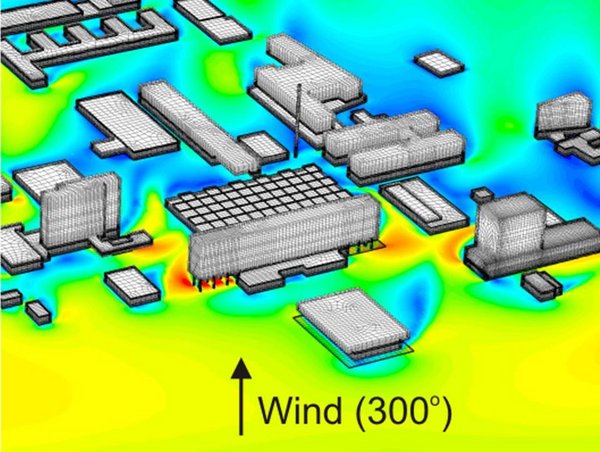
The course consists of three parts. In the first part, the basics of fluid flow and CFD are outlined, together with the most important aspects such as turbulence modelling, near-wall treatment, validation and verification. Part 2 treats several examples of the application of CFD in practical building engineering problems, ranging from preventing air contamination in operating theatres to limiting wind discomfort for pedestrians at the base of high-rise buildings. Finally, part 3 consists of practical training, in which the students are guided to perform a full CFD simulation for a certain building engineering problem.
Learning objectives
After completing this course the students are able to judge the quality of CFD simulations made by themselves or by others.
Underlying objective: Students are able to perform accurate CFD simulations themselves.
Assessment criteria
The ability to judge the quality of CFD simulations made by yourself or by others is judged by the completeness and accuracy in which the student can critically evaluate a scientific journal paper in which a CFD study is described.
Knowledge
- Knowledge of basics of fluid flow, together with the most important aspects such as turbulence modelling, near-wall treatment, validation and verification (n/p).
- Knowledge of basics of fluid flow, together with the most important aspects such as turbulence modelling, near-wall treatment, validation and verification (n/p).
- Knowledge of applications of CFD in practical building engineering problems, ranging from preventing air contamination in operating theatres to limiting wind discomfort for pedestrians at the base of high-rise buildings (n/p).
- Knowledge of the most important aspects to judge the quality of a CFD simulation for a certain building engineering problem (n/p).
(n = noodzakelijke kennis; p = parate kennis)